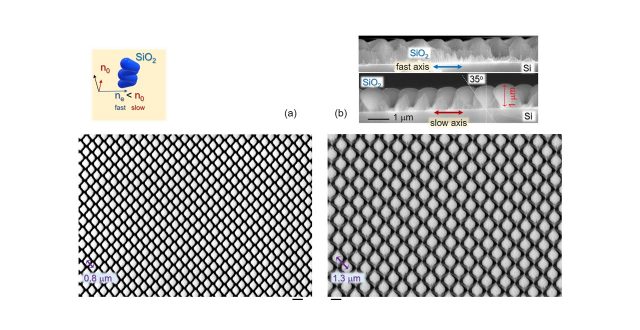
3D columnar silica (glass) nano-domes show anisotropy at IR wavelengths and can be used for radiative cooling and sensors
WRHI News
Published
(School of Materials and Chemical Technology / Dr. Junko Morikawa and Dr. Saulius Juodkazis)
“Anisotropic 3D columnar micro-film coating for applications in infrared and visible spectral ranges”
Applied Surface Science (DOI:10.1016/j.apsusc.2022.152910)
For details, click here.
<Abstract>
Polarisation analysis of thin (∼1μm) SiO2 films deposited via evaporation at a glancing angle of 70°to the normal on resist pillar arrays was carried out using synchrotron-based Fourier transform infrared (s-FTIR) microspectroscopy in reflection mode. Changes in intensity of absorption bands were observed to follow the angular dependence of ∼cos2θ, consistent with the absorption anisotropy. The strongest absorption was found to be the sharp Si-O-Si stretching vibrational mode at 1040 ± 20 cm−1, which can be used for sensor applications, as well as radiative cooling in the atmospheric transparency window, within the range of 8-13μm (i.e. 1250-769 cm−1). Anisotropy of IR absorbance is correlated with retardance/birefringence of the same patterns in the visible spectral range. Larger period patterns of 3D columnar SiO2 films of ∼1μm in thickness deposited on polymer/resist pillar arrays provide the possibility to control anisotropy of the form-birefringent 3D columnar films.
